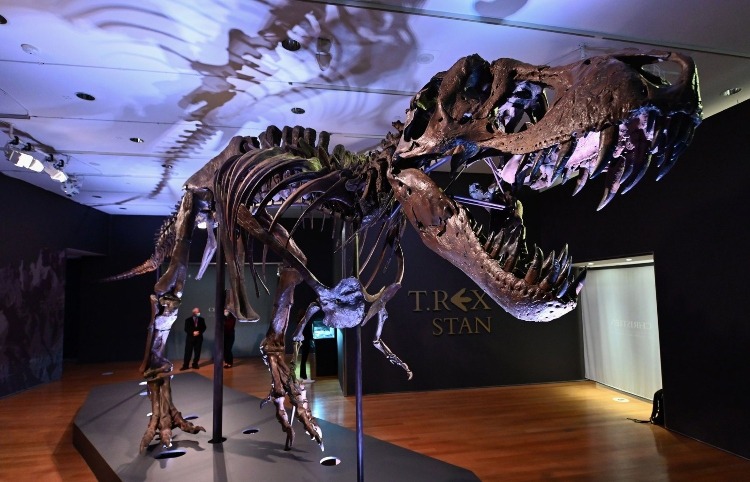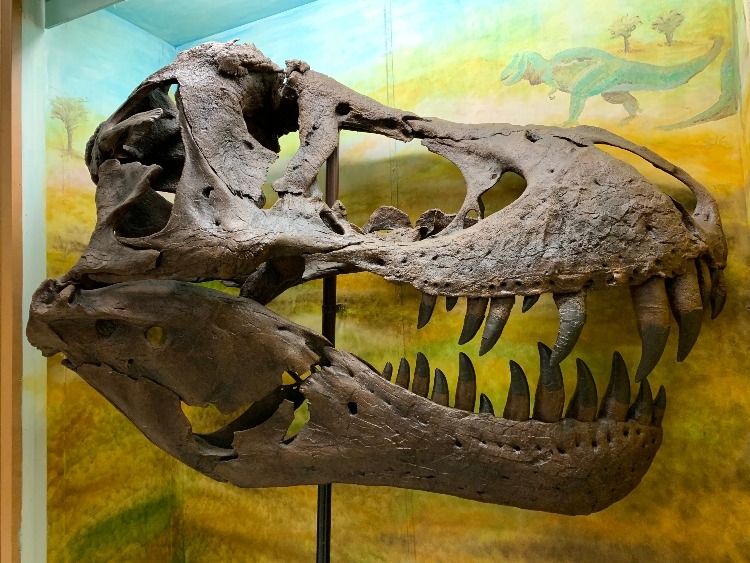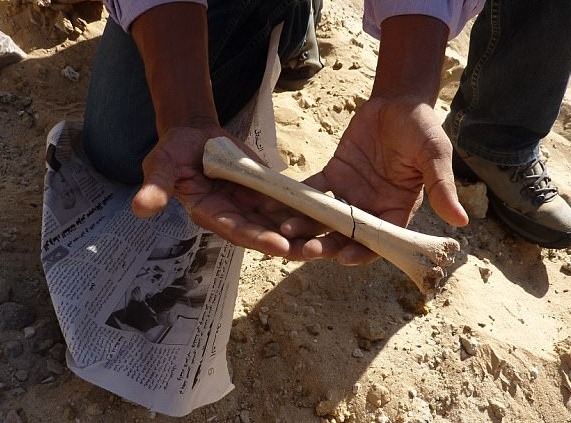Recently, it was announced that an 11 meter tall T-Rex by the name of “Stan” will be the main attraction at Abu Dhabi’s very own Natural History Museum, planned to be opened in 2025. Considered the biggest T-Rex to ever be found, extracting such a large pre-historic reptile was no easy feat.
Initially it was discovered in South Dakota in 1985 by a man of the same name, yet the actual excavation of the dinosaur began in 1992. A group of paleontologists from the Black Hills Institute of Geological Research (BHI) spent a gruesome total of 30,000 hours to unearth every bone of the reptile. Many scientists couldn’t help but marvel at this pre-historic find especially as most of its bones were pretty intact and as mentioned by Wired, Stan has an “almost complete skull”.
What you might not have known about Stan is that, for some time, he sort of vanished. In October 2020, the gigantic reptile was sold at an auction for a staggering 31.8 million dollars. Its buyer was anonymous and ever since that day, nothing was heard of Stan, to the sadness of all paleontologists out there. Luckily, the mystery was solved in April 2022 when it was discovered that Stan was actually on his way to Abu Dhabi.
With Stan being found on American soil, specifically in North Dakota and will eventually be displayed at Abu Dhabu, the Scoop team thought it would be fun to showcase some other cool historic finds specifically on Middle Eastern soil.
Roman Ceramic Jugs “Amphorae”
In 1968, while diving in the bay of Marsa Baghoush, 250 km west of Alexandria, an Egyptian oceanographer by the name of Anwar Abdel Aleem accidentally stumbled upon some amphora, ancient Greek-Roman jars dating back many years. If you have watched Disney’s Hercules, you would have already seen one of these jars during the upbeat song “The Gospel Truth”.
The shape of these jars is quite distinctive with two handles and an hour-glassed shaped body. Mainly used as storage to hold wine, olive oil, cereal and other items of food and drink, they were also an important part of trade as many of them were transported on ships. That is why, later on, once the Center of Maritime Archaeology of Alexandria began their exploration of Marsa Baghoush’s waters, they actually discovered two shipwrecks in July 2011 indicating that the jars belonged to trade ships that were coming in from the East.

To this day more than 500 amphora jars have been discovered with some displayed in Alexandria’s Graeco-Roman Museum. Undergoing renovations, the museum is currently closed but will open very soon and there, you will be able to witness marvels dating back 1000 years.
Stone Age Tools and Animal Bones
In a big dried up lake in Tunisia’s Kebili, animal bones and stone tools as old as about 100,000 years were discovered. Researchers from Tunisia as well as from Oxford University and King’s College London made the discovery. From what they found, they believed that the animal bones belonged to everything from a rhinoceros to an ostrich. What’s cool is that it means that 100,000 years ago, Tunisia used to have a wet and green environment which is starkly different from its dry, desert environment of today.
The other big discovery being the stone tools indicating that there was a lot of hunting that occurred during that time period. As most of the stone tools consisted of stone points, it indicated that the hunters used to fight by throwing spears. It is unknown where the findings of this excavation are currently held yet the discovery in itself is quite impressive.
All these findings, whether on land or underwater, indicate that there is quite a lot more to discover and that history, whether 1000 or 100,000 years old is still waiting to be uncovered.
WE SAID THIS: Don’t forget…History Through Architecture: 5 Palaces Of The Middle East That Are Worth Discovering





